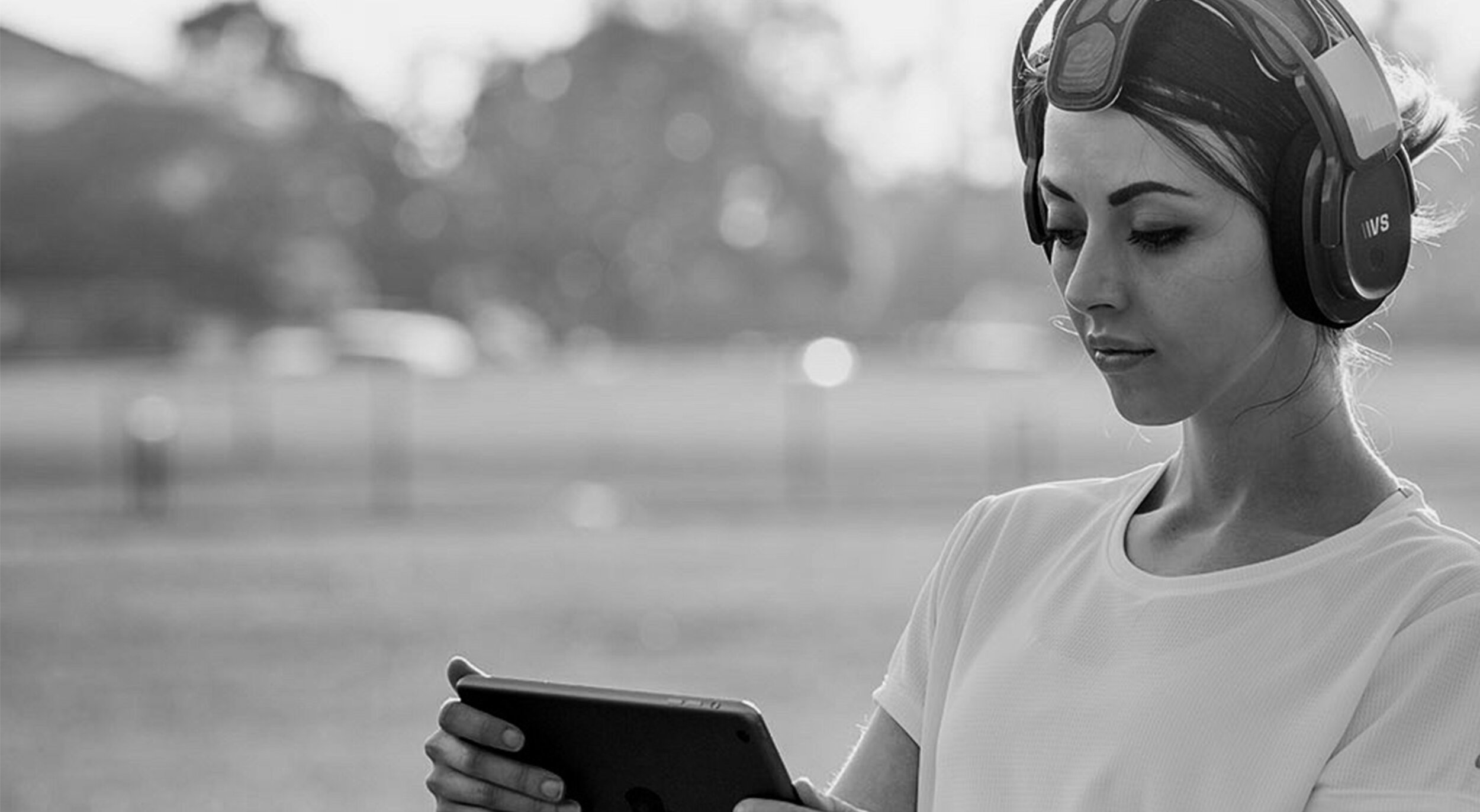
The Versus Assessment
The NeuroPerformance Assessment identifies the strengths and weaknesses of each user’s brain.
Give their brain a breakthrough
Help each client discover what their brain needs and what they can do about it.
Modeled after clinical-grade assessments, the NeuroPerformance Assessment (NPA) is an in-app experience which uses the Versus headset to identify the strongest and weakest areas of each user’s brain. But, Versus doesn’t stop there.
Based on their NPA results, the Versus app automatically assigns each user the performance protocol which best suits their brain’s unique needs. Their assigned performance protocol determines the goal of each user’s Versus exercises.
Keep calm
The Eyes-Closed Task
The NeuroPerfomance Assessment consists of two tasks. The first is the eyes-closed task, which lasts between 2 and 10 minutes. It is used to get a baseline reading for the user’s brain activity. Users will be asked to relax and remain calm to see what their brain looks like when nothing is being demanded of it.
Get going
The Continuous Performance Task
Next, your clients will complete the 12 minute Continuous Performance Task (CPT). The CPT is used to determine how the user’s brain functions over an extended task with varying levels of difficulty. Users will be asked to tap on specific targets and to avoid tapping on non-targets.
See results
Current + cumulative
Users can view their NeuroPerformance Assessment results directly in the app and on their User Dashboard. With a Professional Dashboard subscription, providers like you can view more detailed NPA results for their clients, including average amplitude values for protocol-specific frequencies and sensor sites.
Your client’s brain, explained
The results of the NeuroPerformance Assessment are easy to understand and translate into action.
Construct scores
6 construct scores, 3 stress-related and 3 focus-related, are measured during the assessment.
Response time
Response time is an indication of how quickly the user tapped the screen on targets in the CPT.
Errors
Omission errors are the failures to tap on specified targets; commission errors are tapping on non-targets.
Interpretation
The interpretation offers an explanation of the user's NPA results and how they can act on them.
The science behind the NPA
Defining the problem
The NPA is the result of decades of clinical experience. In a facility in Los Angeles, CA in 2008, our co-founder, Dr. Leslie Sherlin, was using traditional EEG equipment to facilitate the performance of some of the world’s leading professional athletes.
However, he soon realized that several barriers – travel, cost, and time – were preventing his clients from experiencing the full therapeutic effects of his interventions.
Researching solutions
To address this issue, our team of experts in neurofeedback and psychology recorded 19-channel quantitative EEGs (qEEGs) on more than 1,300 elite performers, including world-class athletes (~95%) and top executives from Fortune 500 companies (~5%). These qEEGs consisted of an eyes-closed baseline task and a standardized continuous performance task (CPT).
Creating Versus
Based on our analysis of these qEEGS, we created six constructs to quantify brain performance during the NPA. Subsequently, we used this information to design numerous performance protocols. To refine these protocols, we tested them on our elite client base using traditional EEG equipment. We incorporated the 14 performance protocols that yielded the best results in these tests into the Versus system.








